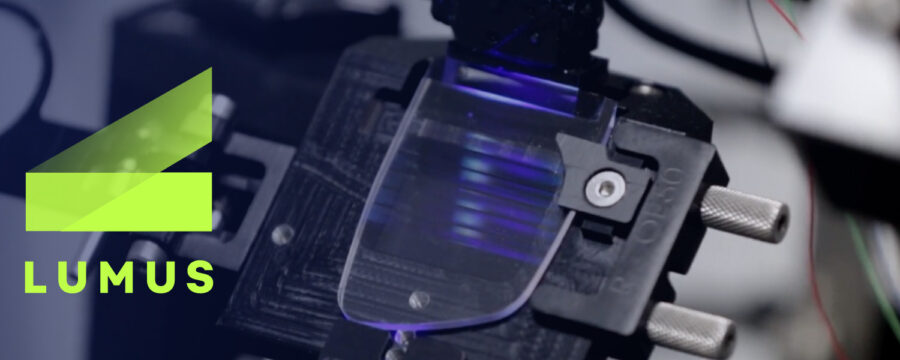
![]()
In Augmented Reality News
March 5, 2024 – Lumus, a developer of reflective or geometric waveguide technology for augmented reality (AR) eyewear, has recently announced that it has been named in the third annual “Innovation Momentum Global Top 100” report by LexisNexis. The company was one of only six companies from the electronics sector to be named, along with the likes of Apple, LG Electronics and Samsung.
According to LexisNexis, the report shows the top 100 global organizations “displaying outstanding innovation momentum over the last two years” and highlights “trailblazing IP portfolios that are charting the course for future development.”

Lumus’ portfolio includes more than 430 issued patents, with more than 540 patents pending, which the company stated places it among the world’s top patent holders for augmented reality optics.
“Our patent portfolio reflects our strategy of maximizing our innovation potential through razor sharp focus and long-term persistence,” said Lumus VP of Intellectual Property Mike Adel. “Being recognized as one of the Innovation Momentum Top 100 is further validation that our commitment to waveguide technology is expanding the boundaries of what’s possible in augmented reality.”
Lumus stated that LexisNexis’ Innovation Momentum methodology identifies companies with patents that “outperform their peers based on the potential to lead to further inventions and the scope of market protection, rewarding companies with small but high-quality portfolios, or those with more extensive holdings that are well-maintained over time.”
Additionally, Innovation Momentum builds on the Patent Asset Index, a unique patent evaluation methodology featured in the analytics platform LexisNexis PatentSight.
“Over the past several years, the proportion of Lumus patent families focused on the design and manufacturing of 2D expansion waveguides has risen sharply to comprise nearly a quarter of all new patent families today. We are now reaping a harvest of allowances in this domain, boosting our confidence in the technology at the core of our product architecture,” added Adel.

The waveguide architecture of Lumus’ Z-Lens enables the development of small, light AR eyeglasses with high-resolution image quality, outdoor-compatible brightness, and seamless Rx integration.
Featuring an optical engine that is 50% smaller than its predecessor, the company stated that its Z-Lens maintains image quality and high luminance efficiency while answering the demands of consumers for natural-looking, unobtrusive AR glasses. Z-Lens’ lightweight optical engine features industry-leading resolution and full, vibrant color to offer superb image quality, according to Lumus. Furthermore, thanks to Z-Lens’ brightness, consumers will be able to enjoy augmented reality in daylight through a pair of glasses that – from the outside – are virtually indistinguishable from a non-AR pair.
Lumus’ Z-Lens architecture also creates several degrees of freedom for glasses manufacturers, including flexibility of the eye-box position and the ability to directly bond Rx prescription lenses. This feature allows consumers to customize their AR eyeglasses to their vision without bulky, heavy inserts, enabling them to be utilized as normal eyewear.
For more information on Lumus and its reflective waveguides for augmented reality, please visit the company’s website.
Image credit: Lumus
About the author
Sam is the Founder and Managing Editor of Auganix. With a background in research and report writing, he has been covering XR industry news for the past seven years.
